The earliest example of a true double neck guitar is from the year 1690. A guitar of that era, small by today’s standards, was built by luthier Alexandre Voboam of
Harp guitars and other multi-neck instruments were not produced on a large scale until the late 19th Century. These were instruments that allowed an individual player the ability to produce a much broader sound due to the addition of bass strings or sympathetic strings.
The sympathetic stringswere not strummed or plucked, but naturally made sound based on the vibrations of the fingered strings. There were few mandolin/guitar combinations produced in this era that allowed the player to change instruments during a song or saved them from having to carry two different instruments. Plus a double neck guitar looks great on stage.
One impetus that may have caused the creation of double neck guitars was the rise of interest in the steel or Hawaiian guitar.
During the late 18th Century, Spanish speaking Mexican cowboys arrived in
Hawaiians took to the instrument andmade the guitar their own by tuning it differently and often to open chords.
As the years progressed, we can turn to the early 20th Century when Hawaiian music became popular inthe United States.
During this fad, guitar companies including Martin built instruments that were meant to be played on a persons lap. Instead of fingering chords and notes these guitars were played by use of a metal bar pressed against the strings. It wasn’t too long before the lap steel became electrified.
Since a lap steel player was limited to keys within the open chord which the instrument was tuned, the obvious answer was to add another neck that was tuned to a different chord. By the 1920’s and 1930’s folks like Alvino Rey were playing multi neck electric steel guitars with popular orchestras. Rey had Gibson Guitars build a double neck steel guitar for him and not long after he was playing three and four necksteel guitars.
During the era of World War II, much of the guitar building business was halted as manufacturers turned their attention and fabrication to building weapons and vehicles for the
By the end of the war, Leo Fender had his own radio and television business in
It was not long before he realized a profit could be made by building amplifiers forthe electric steel guitar players from nearby
Traveling musicians stopped by and provided ideas of their needs. Fender went on to build two and three neck steel guitars, before turning attention to the electric Spanish guitar.
Meanwhile in another part of

Guitarist Grady Martin asked Bigsby to build him a guitar that also had a mandolin-like neck. What resulted was an instrument which had a guitar neck, with three pickups and a Bigsby vibrato and a smaller neck with six individual strings tuned an octave higher. It wasn't a mandolin, as the strings were individual and not in courses, but itdid give Martin a unique sound.
Apparently Grady Martin’s Bigsby Double Neck was not the first that Paul Bigsby built. He built at least six double neck instruments. In those days, production records were at best sketchy.
 |
| $266 K Bigsby |
It is worth noting that recently a 1949 Bigsby guitar sold at auction for over a quarter of a million dollars.
One of Bigsby’s employee’s was Semie Moseley. This is the same Semie
Moseley that went into business in a
Around this same time, the early 1950’s, Joe Maphis was a popular Country and Western guitarist and was a regular performer on a television show produced out of
Semie Moseley struck up a friendship with Joe Maphis and his wife Rose. Rose Maphis played rhythm guitar with her husband. Moseley built several beautiful personalized double neck guitars for Maphis. He even took Rose’s Martin guitar and customized it with a handmade Mosrite neck and he added a fancy large pickguard to the dreadnoughts body.
The exposure Maphis brought to Mosrite guitars paid off big time. A similar double neck instrument was custom made for pint-sized Larry Collins who was Maphis’ protégé and could match Joe note for note. All of the early double neck guitars Semie Moseley made had a guitar neck and an octave guitar neck.
Moseley did create one triple neck guitar in 1954. This instrument included a guitar neck, an octave guitar neck and a mandolin neck.
While on that subject, it is possible that Doc Kauffmann, who was Leo Fender’s long time business partner might have built a triple neck guitar under the brand Kremo Kustom. It is known that Kauffmann didbuild some guitars using that brand name.
Another builder was a
But here I am digressing from the topic of double neck guitars.
In the mid 1960’s when Semie Moseley’s Mosrite Guitar Company was doing a brisk business, the company did offer a production twelve/six string double neck guitar for sale to the public. This guitar featured a twelve string neck on the guitars top and a six string neck underneath. Both sported twin Mosrite single coil pickups with black covers. The twelve string utilized Mosrite’s version of tune-o-matic bridge and the strings were anchored onto a chromed bar held into the body by three wood screws.
The six string neck featured Mosrite’s classic vibramute vibrato. The necks had micro-dot position markers on the rosewood fretboard. All Mosrites had a zero fret. These guitars were offered in various colors, with the most popular being sunburst.
Hallmark Guitars are stillin business. This company was started by Joe Hall. This story about Hall’s relationship with Semie Moseley is very interesting. He had asked Semie to build him a guitar. Somehow Hall wound up working at Mosrite and learned to build guitars using Semie’s methods.
Joe Hall left Moseley’s employment and building guitars under his own brand, that bore Mosrite traits. Hall’s most popular model was called the Swept Wing.
I do not know how many double necks he built. This guitar was specially built for Deke Dickerson.
After Moseley and Bigsby’s creations, it was not too long before other guitar companies began to eyeball the prospect of making double neck guitars.
One of the first that I came across was Carvin Guitars of California. Lowell C. Kiesel’s company first offered double necked electric guitars in their 1959 catalog. Long before the internet this company based their sales on catalogs. They still do. I recall ordering a Carvin catalog around 1963. What I received was a very plain document with black and white pictures of the guitars, guitar kits and amplifiers that Carvin offered.
I also received a typewritten page of price updates. During the early days of Carvin some of the guitars featured necks and bodies made by the Hofner Company of
Their first double neck offering was a guitar and bass. The necks were the same length, so the bass was short scale. The body was made of maple. The guitar had twin single coil pickups that were about the size of P-90’s, while the bass had just one pickup.
Their other double neck was a guitar and an eight string mandolin combination that came with a similar set up. These guitars were very plain and had a natural finish. The small bodies on these guitars were unusual
These styles were offered through 1967.
By 1968, the Carvin double neck had more of a guitar shaped body with necks probably imported from Hofner. By 1971, the guitar neck was similar, but the bass neck had a more refined headstock. In 1972, Carvin changed the shape of the twelve/six model.
It was in 1976 that the Carvin double neck guitar had a body that looked more like a small Les Paul. The necks were bound and topped with an ebony fretboard. The large rectangular position markers were made of mother-of-toilet seat. The humbucking pickups came with a chrome cover. The 1978 catalog shows a similar body with open humbucking pickups.
These instruments looked more like the guitars that we now associate with the Carvin Company.
By 1979 the double neck was no longer offered. By 1980, the double neck was back with a new improved shape.
In 1990-91 Carvin offered a twelve/six model. Both had pointy headstocks and tuner on one side. By 199, Carvin discontinued their line of double neck guitars as a standard option.
Jimmy Bryant was a well known guitarist in the 1950’s. Much like Maphis, Bryant’s style was fast, but more in the jazz and swing realm. Early on Bryant was one of the first Fender endorsers playing a Fender Broadcaster. But he was looking for a new sound and came upon a guitar builder from
They built a Six and Twelve String double neck for Bryant. He used this guitar throughout his career. The Stratosphereguitar was rather unusual looking. It sported the maple twelve string neck on top and the maple six string neck underneath. Oddly, the headstocks for both necks were slotted. The body was offset and small. There were two single coil pickups for each neck. The neck pickups were parallel and the bridge pickups were slightly slanted.
Both necks had steel offset bridges and stop plates to attach the strings. A switch was near the stop plates that allowed the player to switch the necks on or off. There were two sets of controls, volume and tone for each neck as well as selector switches. There is also a slider switch on the lower side of the instrument.
Bryant tuned the six string neck in a normal manner; however, he tuned the twelve string neck to major and minor thirds.
1958 was a risky year for Gibson guitars. This was the year they introduced their ‘Future guitars’ lineup which included the Flying Vee, the Explorer and the elusive Futurama. But Gibson spotted the double neck trend and jumped into the market with two different double neck guitars.
The Double Twelve was a beautiful instrument. The body on these instruments was different than the SG shape we associate with the EDS-1275. The Double Twelve came with two humbucking pickups per neck.
A switch near the bridge plate provided the option of switching the electronics to either neck. The electronics were two volume and two tone controls and a pickup selector switch that controlled the pickups on either neck. The twelve string neck was on top with the six string neck on the bottom. In my opinion this was possibly the finest looking of all the twelve string double necks. The double cutaway body was thicker than the SG and it was bound in white trim.
The company also offered the Double Mandolin. This later was named the EMS-1275 (Electric Mandolin Spanish). This was similar to the double necks that Moseley and Bigsby had made in that it came with a guitar neck and an octave guitar neck. The guitar neck sported twin humbuckers, while the mandolin neck only had a single humbucker. Once again, the body shape was much different than the SG shape.
The controls for each neck were mounted on the lower bout under each neck. Both featured a single volume and tone control per neck. The switches were mounted near the string stop plate. The one for the guitar side controlled the neck and bridge pickups, while the switch mounted near the octave guitar neck controlled which neck was active. This instruments body was also bound in white trim.
It was in 1962-63 both of thesedouble neck instruments were reinvented using the SG shape. Gibson also added EBS-1250 to the line up. This was a combination of a six string guitar and a four string bass guitar. The bass guitar came with a built-in fuzztone. This line up was offered through 1967, with the double bass being offered through 1968.
The EDS-1275 was revived in 1974 and offered through 1998. The
The Epiphone version has been available for many years under the model G-1275. I believe the initial models sold under the Epiphone brand had bolt-on necks. The current production model comes with set necks.
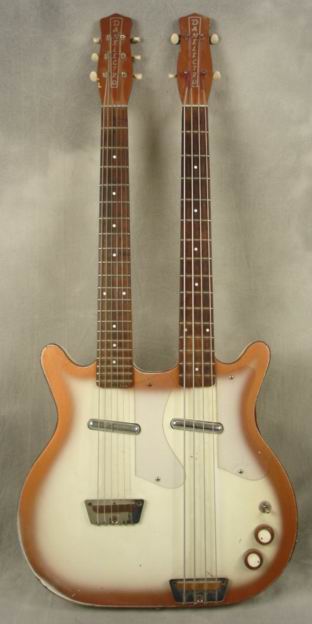 |
| 1963 Danelectro |
Nate Daniels had been building amps since 1948. His amplifiers were mainly sold through catalog companies such as Sears and Roebuck and Montgomery Wards.
It was not until 1956 that he introduced the Danelectro line of guitars.
Danelectro entered the double neck market with its 1959 advertisement of Stan and Dan; two clean-cut young men of the day both decked out with white shirts, Hagar slacks and DanelectroShorthorn double neck guitars. The top neck was a six string guitar and the bottom neck was a bass guitar.
While the guitar was a normal 24.75” scale with 21 frets, the bass had a short scale of 29.5” with only 15 frets. The Danelectro double neck was also available as a six string guitar and six string baritone guitar.
As usual, both necks had two Dano lipstick pickups.
The Masonite Danelectros lasted until 1966 when Daniels sold the company. In 1998 the company was resurrected under new ownership. This company made guitars through 2001. They offered two versions of the double neck. One was a six/twelve string model and the other was a six string guitar and a six string baritone guitar. Both were nice instruments with a great price.
Danelectro guitars looked cheap, but sounded great and were used on countless recordings.
This is a Gretsch Anniversary double neck. Gretsch currently offers a guitar/baritone guitar doubleneck.
After the British Invasion a flood of Japanese and Korean made guitars arrived in the
This is a 1970 Aria copy of a Gibson double neck.
I have noted that some early Carvin guitars were made of Hofner parts. Note the similarity between this Hofner double neck from the very early 1970’s and Carvin’s double neck of the same era.
Another German guitar manufacturer named Hoyer built this 1970’s model.
Rickenbacker built and offered several models of double neck guitars including a bass/six string using their 4001 template and a twelve/six string using their 360 design.
The B.C. Rich, Ibanez and Kramer guitar companies have all built special order guitars for artists, such as Eddie Van Halen, Michael Angleo Batio, and Dave Mustaine.
Often these guitars have two six string necks and are played by using the tapping method.
There were and are a few companies that make acoustic double neck guitars. For years Ovation guitars offered a twelve/six model. This is now made offshore under their Celebrity brand.
Around 1979 Yairi guitars offered the model DY 87. This was a wonderful guitar. It sounds great and very easy on the fingers.
In the late 1990's, the Washburn Guitar Company offered a twelve / six string guitar designated the model EA220 six/twelve string guitar in
their Festival Series.
I have recently profiled Blueberry Guitars. They make some fine instruments with intricate inlay and wood carving designs. All their guitars are handmade.
They offer several double neck models which include a six / twelve string guitar, a double neck with two six string necks and fan frets, as well as a six string / 4 string acoustic bass guitar. Blueberry does not sell it’s instruments in stores. Business is done only online.
Here is a Martin Double Neck Guitar made by their custom shop.
The clip below will give a better understanding of Jimmy Bryants odd 12 string tuning on his Stratosphere double neck. On the 12 string neck each string has two pitches that mimic the sound of two guitars. A guitarist today could use a harmonizer for the same effect. In 1956 that technology did not exist.





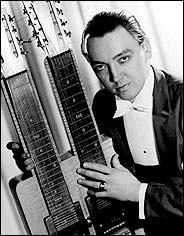





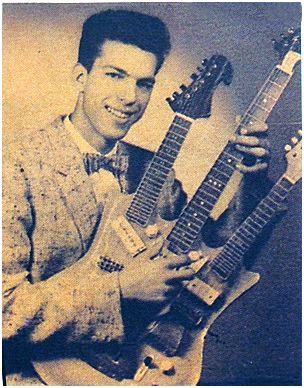


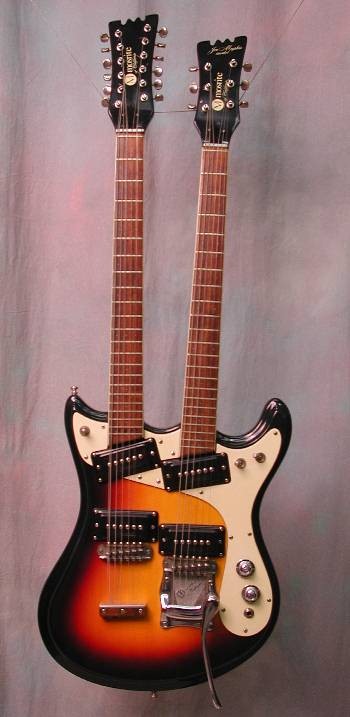






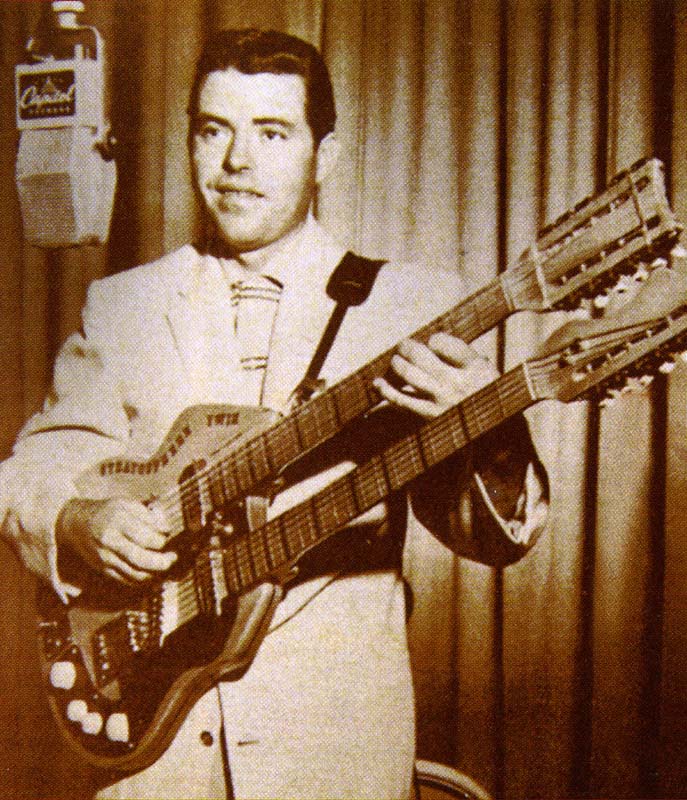


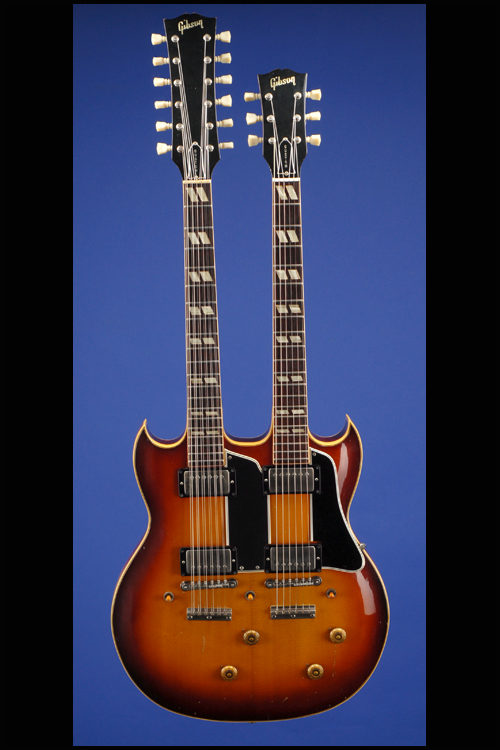


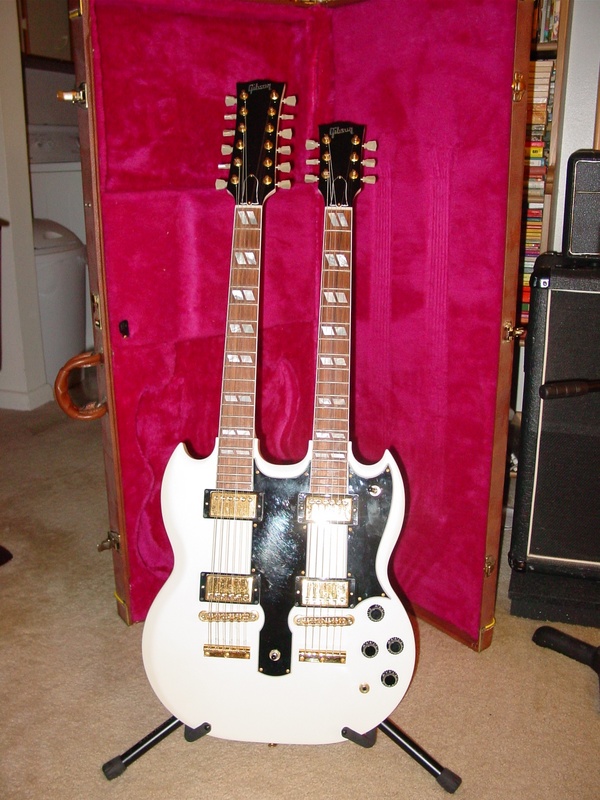

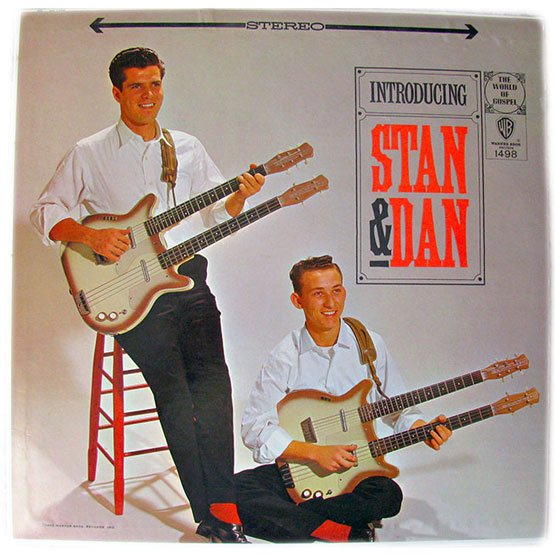
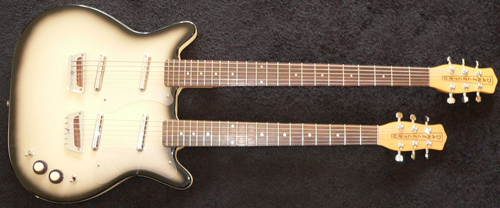


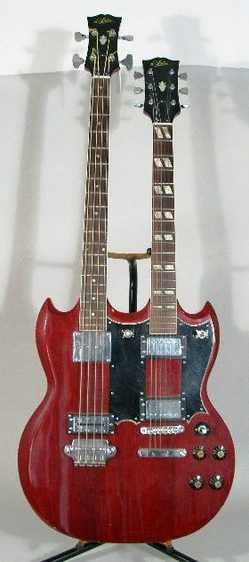






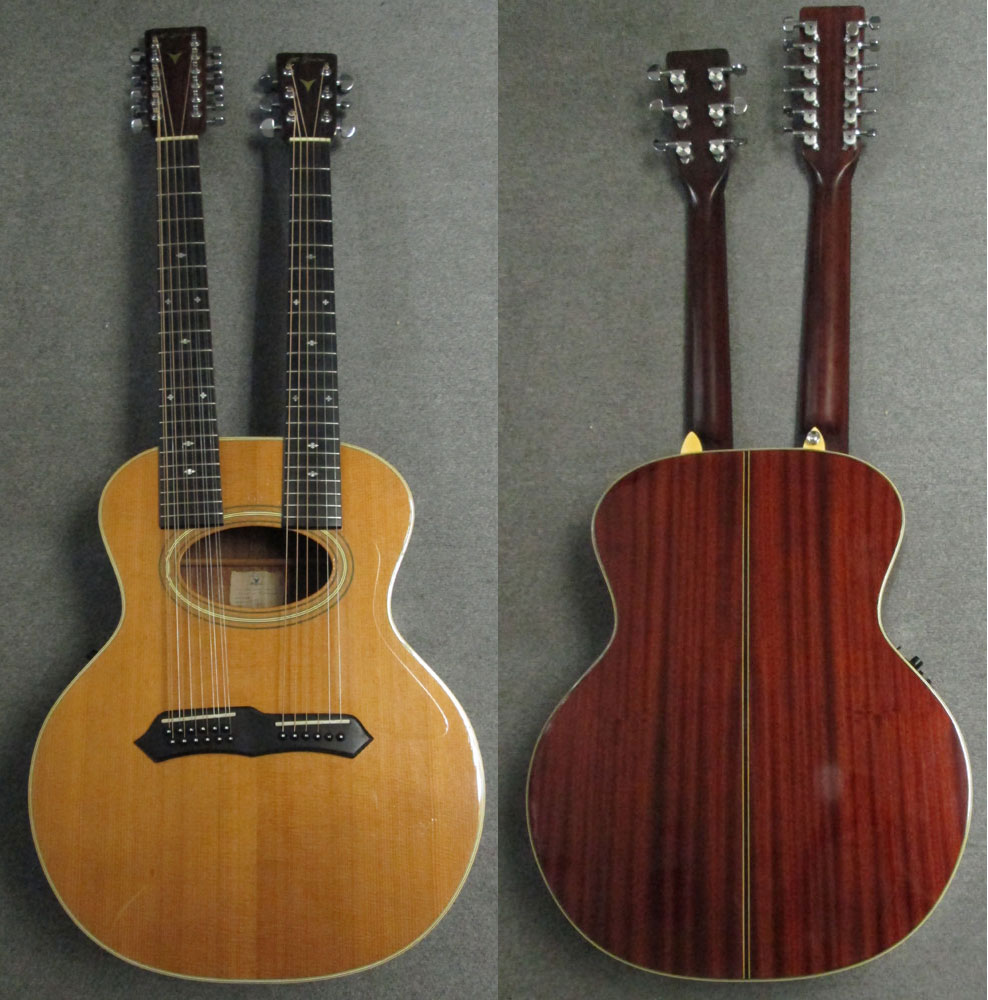



Tidak ada komentar:
Posting Komentar